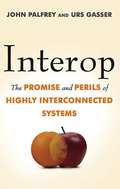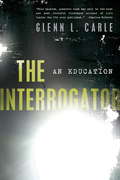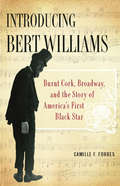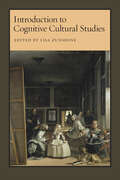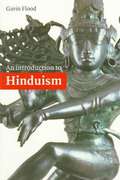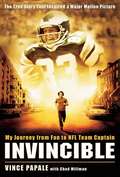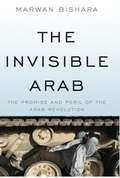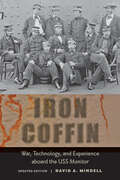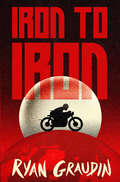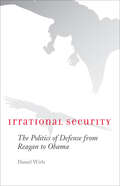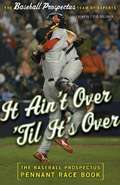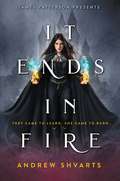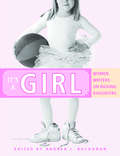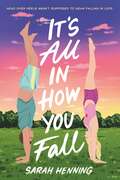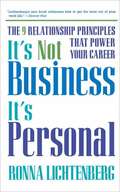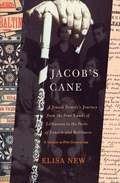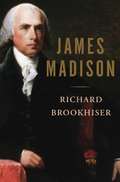- Table View
- List View
Interop: The Promise and Perils of Highly Interconnected Systems
by John Palfrey Urs GasserIn Interop, technology experts John Palfrey and Urs Gasser explore the immense importance of interoperability-the standardization and integration of technology-and show how this simple principle will hold the key to our success in the coming decades and beyond.The practice of standardization has been facilitating innovation and economic growth for centuries. The standardization of the railroad gauge revolutionized the flow of commodities, the standardization of money revolutionized debt markets and simplified trade, and the standardization of credit networks has allowed for the purchase of goods using money deposited in a bank half a world away. These advancements did not eradicate the different systems they affected; instead, each system has been transformed so that it can interoperate with systems all over the world, while still preserving local diversity.As Palfrey and Gasser show, interoperability is a critical aspect of any successful system-and now it is more important than ever. Today we are confronted with challenges that affect us on a global scale: the financial crisis, the quest for sustainable energy, and the need to reform health care systems and improve global disaster response systems. The successful flow of information across systems is crucial if we are to solve these problems, but we must also learn to manage the vast degree of interconnection inherent in each system involved. Interoperability offers a number of solutions to these global challenges, but Palfrey and Gasser also consider its potential negative effects, especially with respect to privacy, security, and co-dependence of states; indeed, interoperability has already sparked debates about document data formats, digital music, and how to create successful yet safe cloud computing. Interop demonstrates that, in order to get the most out of interoperability while minimizing its risks, we will need to fundamentally revisit our understanding of how it works, and how it can allow for improvements in each of its constituent parts.In Interop, Palfrey and Gasser argue that there needs to be a nuanced, stable theory of interoperability-one that still generates efficiencies, but which also ensures a sustainable mode of interconnection. Pointing the way forward for the new information economy, Interop provides valuable insights into how technological integration and innovation can flourish in the twenty-first century.
The Interrogator: An Education
by Glenn L. CarleTo his friends and neighbors, Glenn L. Carle was a wholesome, stereotypical New England Yankee, a former athlete struggling against incipient middle age, someone always with his nose in an abstruse book. But for two decades Carle broke laws, stole, and lied on a daily basis about nearly everything. &“I was almost never who I said I was, or did what I claimed to be doing.&” He was a CIA spy. He thrived in an environment of duplicity and ambiguity, flourishing in the gray areas of policy. The Interrogator is the story of Carle&’s most serious assignment, when he was &“surged&” to become an interrogator in the U.S. Global War on Terror to interrogate a top level detainee at one of the CIA&’s notorious black sites overseas. It tells of his encounter with one of the most senior al-Qa&’ida detainees the U.S. captured after 9/11, a &“ghost detainee&” who, the CIA believed, might hold the key to finding Osama bin Ladin.As Carle&’s interrogation sessions progressed though, he began to seriously doubt the operation. Was this man, kidnapped in the Middle East, really the senior al-Qa&’ida official the CIA believed he was? Headquarters viewed Carle&’s misgivings as naïve troublemaking. Carle found himself isolated, progressively at odds with his institution and his orders. He struggled over how far to push the interrogation, wrestling with whether his actions constituted torture, and with what defined his real duty to his country. Then, in a dramatic twist, headquarters spirited the detainee and Carle to the CIA&’s harshest interrogation facility, a place of darkness and fear, which even CIA officers only dared mention in whispers.A haunting tale of sadness, confusion, and determination, The Interrogator is a shocking and intimate look at the world of espionage. It leads the reader through the underworld of the Global War on Terror, asking us to consider the professional and personal challenges faced by an intelligence officer during a time of war, and the unimaginable ways in which war alters our institutions and American society.
Into the Midnight Void (Beyond the Ruby Veil #2)
by Mara FitzgeraldFans of Holly Black and Kendare Blake will obsess over the conclusion to this deliciously dark YA fantasy duology!Emanuela has finally gotten what she's always wanted. Since escaping her catacomb prison, she's become the supreme ruler of everything under the veils. Finally, she has the power to throw aside senseless, old traditions and run things exactly the way they should be. But when cracks in her magic start to show, Emanuela begrudgingly allies herself with her enemies, including her frustratingly alluring archnemesis, Verene. Together, they discover deeper truths about the mysterious blood magic Emanuela and Verene both wield. There is a higher, otherworldly authority outside the veils, and in order to save Occhia and the other realms, Emanuela may just have to rip another crown off someone's head.
Introducing Bert Williams: Burnt Cork, Broadway, and the Story of America's First Black Star
by Camille F. ForbesAccording to critics of his time, Bert Williams was "the Greatest Comedian on the American Stage.” A black Bahamian immigrant, Williams made his start as a barker advertising the rough-and-tumble "medicine shows” that dotted the Wild West at the end of the nineteenth century. Not long after joining a minstrel troupe and donning the burnt- cork makeup of blackface, he teamed up with African American George Walker in a sixteen-year partnership that would take them from rural western mining towns to the bright lights of Broadway.In Introducing Bert Williams, historian Camille Forbes reveals a fascinating figure, initiating the reader into the vivid world of nineteenth- and early twentieth-century popular entertainment. Williams's long and varied career is a whirlwind of drama, glamour, and ambition-nothing less than the birth of American show business.
Introduction to Cognitive Cultural Studies
by Lisa ZunshineDrawing on the explosion of academic and public interest in cognitive science in the past two decades, this volume features articles that combine literary and cultural analysis with insights from neuroscience, cognitive evolutionary psychology and anthropology, and cognitive linguistics. Lisa Zunshine’s introduction provides a broad overview of the field. The essays that follow are organized into four parts that explore developments in literary universals, cognitive historicism, cognitive narratology, and cognitive approaches in dialogue with other theoretical approaches, such as postcolonial studies, ecocriticism, aesthetics, and poststructuralism. Introduction to Cognitive Cultural Studies provides readers with grounding in several major areas of cognitive science, applies insights from cognitive science to cultural representations, and recognizes the cognitive approach’s commitment to seeking common ground with existing literary-theoretical paradigms. This book is ideal for graduate courses and seminars devoted to cognitive approaches to cultural studies and literary criticism.Contributors: Mary Thomas Crane, Nancy Easterlin, David Herman, Patrick Colm Hogan, Bruce McConachie, Alan Palmer, Alan Richardson, Ellen Spolsky, G. Gabrielle Starr, Blakey Vermeule, Lisa Zunshine
An Introduction to German Pietism: Protestant Renewal at the Dawn of Modern Europe (Young Center Books in Anabaptist and Pietist Studies)
by Douglas H. ShantzAn Introduction to German Pietism provides a scholarly investigation of a movement that changed the history of Protestantism. The Pietists can be credited with inspiring both Evangelicalism and modern individualism.Taking into account new discoveries in the field, Douglas H. Shantz focuses on features of Pietism that made it religiously and culturally significant. He discusses the social and religious roots of Pietism in earlier German Radicalism and situates Pietist beginnings in three cities: Frankfurt, Leipzig, and Halle. Shantz also examines the cultural worlds of the Pietists, including Pietism and gender, Pietists as readers and translators of the Bible, and Pietists as missionaries to the far reaches of the world. He not only considers Pietism's role in shaping modern western religion and culture but also reflects on the relevance of the Pietist religious paradigm of today.The first survey of German Pietism in English in forty years, An Introduction to German Pietism provides a narrative interpretation of the movement as a whole. The book's accessible tone and concise portrayal of an extensive and complex subject make it ideal for courses on early modern Christianity and German history. The book includes appendices with translations of German primary sources and discussion questions.
An Introduction to Hinduism (PDF)
by Gavin FloodThis book provides a much-needed thematic and historical introduction to Hinduism, the religion of the majority of people in India. Dr Flood traces the development of Hindu traditions from their ancient origins, through the major deities of Visnu, Siva and the Goddess, to the modern world. Hinduism is discussed as both a global religion and a form of nationalism. Emphasis is given to the tantric traditions, which have been so influential; to Hindu ritual, which is more fundamental to the life of the religion than are specific beliefs or doctrines; and to Dravidian influences from south India. An Introduction to Hinduism examines the ideas of dharma, particularly in relation to the ideology of kingship, caste and world renunciation. Dr Flood also introduces some debates within contemporary scholarship about the nature of Hinduism. It is suitable both for the student and for the general reader.
An Introduction to the US Health Care Industry: Balancing Care, Cost, and Access
by David S. GuzickFor decades, the United States has been faced with a puzzling problem: Despite spending much more money per capita on health care than any other developed nation, its population suffers from notoriously poorer health. In comparison with 10 other high-income nations, in fact, the US has the lowest life expectancy at birth, the highest rates of infant and neonatal mortality, and the most inequitable access to physicians when adjusted for need. In An Introduction to the US Health Care Industry, Dr. David S. Guzick takes an in-depth look at this troubling issue. Bringing to bear his unique background as a physician, economist, former University of Rochester medical school dean, and former president of the University of Florida Health System, Dr. Guzick shows that what we commonly refer to as the US health care "system" is actually an industry forged by a unique collection of self-interested and disjointed stakeholders. He argues that the assumptions underlying well-functioning markets do not align with health care. The resulting market imperfections, combined with entrenched industry stakeholders, have led to a significant imbalance of care, cost, and access.Using a nontechnical framework, Dr. Guzick introduces readers to the economic principles behind the function—and dysfunction—of our health care industry. He shows how the market-based approach could be expected to remedy these problems while detailing the realities of imperfections, regulations, and wealth inequality on those functions. He also analyzes how this industry developed, presenting the conceptual underpinnings of the health care industry while detailing its history and tracing the creation and entrenchment of the current federation of key stakeholders—government, insurance companies, hospitals, doctors, employers, and drug and device manufacturers. In the final section of the book, Dr. Guzick looks to the future, describing the prevention, innovation, and alternative financing models that could help to rebalance the priorities of care, cost, and access that Americans need.
An Introduction to the US Health Care Industry: Balancing Care, Cost, and Access
by David S. GuzickFor decades, the United States has been faced with a puzzling problem: Despite spending much more money per capita on health care than any other developed nation, its population suffers from notoriously poorer health. In comparison with 10 other high-income nations, in fact, the US has the lowest life expectancy at birth, the highest rates of infant and neonatal mortality, and the most inequitable access to physicians when adjusted for need. In An Introduction to the US Health Care Industry, Dr. David S. Guzick takes an in-depth look at this troubling issue. Bringing to bear his unique background as a physician, economist, former University of Rochester medical school dean, and former president of the University of Florida Health System, Dr. Guzick shows that what we commonly refer to as the US health care "system" is actually an industry forged by a unique collection of self-interested and disjointed stakeholders. He argues that the assumptions underlying well-functioning markets do not align with health care. The resulting market imperfections, combined with entrenched industry stakeholders, have led to a significant imbalance of care, cost, and access.Using a nontechnical framework, Dr. Guzick introduces readers to the economic principles behind the function—and dysfunction—of our health care industry. He shows how the market-based approach could be expected to remedy these problems while detailing the realities of imperfections, regulations, and wealth inequality on those functions. He also analyzes how this industry developed, presenting the conceptual underpinnings of the health care industry while detailing its history and tracing the creation and entrenchment of the current federation of key stakeholders—government, insurance companies, hospitals, doctors, employers, and drug and device manufacturers. In the final section of the book, Dr. Guzick looks to the future, describing the prevention, innovation, and alternative financing models that could help to rebalance the priorities of care, cost, and access that Americans need.
Introduction to US Health Policy: The Organization, Financing, and Delivery of Health Care in America
by Donald A. BarrHealth care reform has been a dominant theme in public discourse for decades now. The passage of the Affordable Care Act was a major milestone, but rather than quell the rhetoric, it has sparked even more heated debate. In the latest edition of Introduction to US Health Policy, Donald A. Barr reviews the current structure of the American health care system, describing the historical and political contexts in which it developed and the core policy issues that continue to confront us today.Barr;€™s comprehensive analysis explores the various organizations and institutions that make the US health care system work;¢;‚¬;€?or fail to work. He describes in detail the paradox of US health care;¢;‚¬;€?simultaneously the best in the world and one of the worst among developed countries;¢;‚¬;€?while introducing readers to broad cultural issues surrounding health care policy, such as access, affordability, and quality. Barr also discusses specific elements of US health care with depth and nuance, including insurance, especially Medicare and Medicaid. He scrutinizes the shift to for-profit managed care while analyzing the pharmaceutical industry, issues surrounding long-term care, the plight of the uninsured, the prevalence of medical errors, and the troublesome issue of nursing shortages. The thoroughly updated edition of this widely adopted text focuses on the Affordable Care Act. It explains the steps taken to carry out the Act, the changes to the Act based on recent Supreme Court decisions, the success of the Act in achieving the combined goals of improved access to care and constraining the costs of care, and the continuing political controversy regarding its future. Drawing on an extensive range of resources, including government reports, scholarly publications, and analyses from a range of private organizations, Introduction to US Health Policy provides scholars, policymakers, and health care providers with a comprehensive platform of ideas that is key to understanding and influencing the changes in the US health care system.
Introduction to US Health Policy: The Organization, Financing, and Delivery of Health Care in America
by Donald A. BarrHealth care reform has been a dominant theme in public discourse for decades now. The passage of the Affordable Care Act was a major milestone, but rather than quell the rhetoric, it has sparked even more heated debate. In the latest edition of Introduction to US Health Policy, Donald A. Barr reviews the current structure of the American health care system, describing the historical and political contexts in which it developed and the core policy issues that continue to confront us today.Barr;€™s comprehensive analysis explores the various organizations and institutions that make the US health care system work;¢;‚¬;€?or fail to work. He describes in detail the paradox of US health care;¢;‚¬;€?simultaneously the best in the world and one of the worst among developed countries;¢;‚¬;€?while introducing readers to broad cultural issues surrounding health care policy, such as access, affordability, and quality. Barr also discusses specific elements of US health care with depth and nuance, including insurance, especially Medicare and Medicaid. He scrutinizes the shift to for-profit managed care while analyzing the pharmaceutical industry, issues surrounding long-term care, the plight of the uninsured, the prevalence of medical errors, and the troublesome issue of nursing shortages. The thoroughly updated edition of this widely adopted text focuses on the Affordable Care Act. It explains the steps taken to carry out the Act, the changes to the Act based on recent Supreme Court decisions, the success of the Act in achieving the combined goals of improved access to care and constraining the costs of care, and the continuing political controversy regarding its future. Drawing on an extensive range of resources, including government reports, scholarly publications, and analyses from a range of private organizations, Introduction to US Health Policy provides scholars, policymakers, and health care providers with a comprehensive platform of ideas that is key to understanding and influencing the changes in the US health care system.
Invincible: My Journey from Fan to NFL Team Captain
by Vince PapaleThe true story of the NFL's oldest rookie In 1976, Vince Papale was thirty, a former schoolteacher and part-time bartender, and a season ticket-holder for his beloved Philadelphia Eagles. When he heard that Coach Dick Vermeil was holding open tryouts, he decided to give it a shot. Shocking himself and the coaches, he ran an explosive 40-yard-dash in just 4.5 seconds -- a world-class time -- and was offered a contract on the spot. When he joined the team, Papale became the oldest non-kicking rookie in NFL history, a fan favorite who played for four years and was named a team captain. Invincible is Vince Papale's story, and a tie-in to the Disney Pictures film of the same name starring Mark Wahlberg as Papale and Greg Kinnear as Vermeil. But more than just a tie-in, it tells Papale's story in his own words, covering subjects not included in the film. Like Rudy, Glory Road, and Rookie, it is the true story of an ordinary man who achieves an extraordinary goal.
The Invisible Arab: The Promise and Peril of the Arab Revolutions
by Marwan BisharaThe Invisible Arab traces the roots of the revolutions in the Arab world. Marwan Bishara, chief policy analyst of Al Jazeera English and the anchor of the program “Empire”, combines on-the-ground reporting, extensive research and scholarship, and political commentary in this book on the complex influences that made the revolutions possible. Bishara argues that the inclusive, pluralistic nationalism that motivated the revolutions are indispensable to their long-term success. The Invisible Arab is a voyage in time from the Arab world's 'liberation generation' through the 'defeated' and 'lost generations', arriving at today's 'miracle generation'. Bishara unpacks how this new generation, long seen as a demographic bomb, has proved to be the agent of progress, unity and freedom. It has in turn used social networks to mobilize for social justice. Bishara discusses how Israel, oil, terrorism and radical Islam have affected the interior identity of the region as well as Western projections upon it. Protection of Israel, Western imperial ambition, a thirst for oil, and fear of radicalism have caused many Western regimes and media to characterize Arab countries and people as unreceptive to democracy or progress. These ideas are as one-dimensional as they are foolhardy. Bishara argues that the Arab revolutions present a great window of opportunity for reinventing and improving Arab ties with the rest of the world— notably the West—on the basis of mutual respect and mutual interest. The revolutions will be judged by how they realize freedom and justice, and how they can pave the way for reconciling and accommodating nationalism and Islam with democracy. Bishara argues that these pillars—liberty and justice reconciled with religion and nationalism, form the bedrock that will allow stability and progress to flourish in the Arab world and beyond.
Iron Coffin: War, Technology, and Experience aboard the USS Monitor (Johns Hopkins Introductory Studies in the History of Technology)
by David A. MindellThe USS Monitor famously battled the CSS Virginia (the armored and refitted USS Merrimack) at Hampton Roads in March 1862. This updated edition of David A. Mindell's classic account of the ironclad warships and the human dimension of modern warfare commemorates the 150th anniversary of this historic encounter.Mindell explores how mariners—fighting "blindly," below the waterline—lived in and coped with the metal monster they called the "iron coffin." He investigates how the ironclad technology, new to war in the nineteenth century, changed not only the tools but also the experience of combat and anticipated today’s world of mechanized, pushbutton warfare. The writings of William Frederick Keeler, the ship’s paymaster, inform much of this book, as do the experiences of everyman sailor George Geer, who held Keeler in some contempt. Mindell uses their compelling stories, and those of other shipmates, to recreate the thrills and dangers of living and fighting aboard this superweapon. Recently, pieces of the Monitor wreck have been raised from their watery grave, and with them, information about the ship continues to be discovered. A new epilogue describes the recovery of the Monitor turret and its display at the USS Monitor Museum in Newport News, Virginia.This sensitive and enthralling history of the USS Monitor ensures that this fateful ship, and the men who served on it, will be remembered for generations to come.
Iron Coffin: War, Technology, and Experience aboard the USS <I>Monitor</I> (Johns Hopkins Introductory Studies in the History of Technology)
by David A. MindellThe USS Monitor famously battled the CSS Virginia (the armored and refitted USS Merrimack) at Hampton Roads in March 1862. This updated edition of David A. Mindell's classic account of the ironclad warships and the human dimension of modern warfare commemorates the 150th anniversary of this historic encounter.Mindell explores how mariners—fighting "blindly," below the waterline—lived in and coped with the metal monster they called the "iron coffin." He investigates how the ironclad technology, new to war in the nineteenth century, changed not only the tools but also the experience of combat and anticipated today’s world of mechanized, pushbutton warfare. The writings of William Frederick Keeler, the ship’s paymaster, inform much of this book, as do the experiences of everyman sailor George Geer, who held Keeler in some contempt. Mindell uses their compelling stories, and those of other shipmates, to recreate the thrills and dangers of living and fighting aboard this superweapon. Recently, pieces of the Monitor wreck have been raised from their watery grave, and with them, information about the ship continues to be discovered. A new epilogue describes the recovery of the Monitor turret and its display at the USS Monitor Museum in Newport News, Virginia.This sensitive and enthralling history of the USS Monitor ensures that this fateful ship, and the men who served on it, will be remembered for generations to come.
Iron to Iron (Wolf by Wolf)
by Ryan GraudinOnce upon a different time, there was a boy who raced through a kingdom of death.Sixteen-year-old Luka Löwe has one goal in mind: Win the 1955 Axis Tour and become the first Double Cross victor. If he can accomplish that, maybe his father will finally see him as a worthy son. He's completed the grueling trek from Germania to Tokyo before, but this time is different. Luka never expected to meet Adele Wolfe, another racer posing as her twin brother and with a singular dream--to live life on her own terms.When Luka and Adele form an alliance, an unlikely bond forms, and even possibly love. But only one person can win the Axis Tour....Can everything Luka and Adele built together survive the race?Word count: ~24000
Irrational Security: The Politics of Defense from Reagan to Obama
by Daniel WirlsThe end of the Cold War was supposed to bring a "peace dividend" and the opportunity to redirect military policy in the United States. Instead, according to Daniel Wirls, American politics following the Cold War produced dysfunctional defense policies that were exacerbated by the war on terror. Wirls’s critical historical narrative of the politics of defense in the United States during this "decade of neglect" and the military buildup in Afghanistan and Iraq explains how and why the U.S. military has become bloated and aimless and what this means for long-term security.Examining the recent history of U.S. military spending and policy under presidents George H. W. Bush, Bill Clinton, and George W. Bush, Wirls finds that although spending decreased from the close of the first Bush presidency through the early years of Clinton’s, both administrations preferred to tinker at the edges of defense policy rather than redefine it. Years of political infighting escalated the problem, leading to a military policy stalemate as neither party managed to craft a coherent, winning vision of national security. Wirls argues that the United States has undermined its own long-term security through profligate and often counterproductive defense policies while critical national problems have gone unmitigated and unsolved.This unified history of the politics of U.S. military policy from the end of the Cold War through the beginning of the Obama presidency provides a clear picture of why the United States is militarily powerful but "otherwise insecure."
It Ain't Over 'Til It's Over: The Baseball Prospectus Pennant Race Book
by Steven Goldman Baseball ProspectusPennant races are arguably the most important aspect of baseball. Players, teams, and franchises are all after one goal: to win the pennant and get into the post-season. But what really determines who wins? Statistical analyses of baseball abound: different ways of breaking down everyone's individual performance, from hitters and pitchers to managers and even owners. But surprisingly, team success-what makes some teams winners over an entire season-has never been looked at with the same statistical rigor. In It Ain't Over 'Til It's Over, The Baseball Prospectus Team of Experts introduce the Davenport Method of deciding which races were the most dramatic-the closest, the most volatile-and determine the ten greatest races of modern baseball history. They use these key races (and a few others) to answer the main question: What determines who wins? How important are such things as mid-season trades, how much a manager overworks his pitchers, and why teams have winning and losing streaks? Can one player carry a team? Can one bad player ruin a team? Can one bad play ruin a team's chances? This fascinating and illuminating book will change your perception of the game.
It Ends in Fire
by Andrew ShvartsA James Patterson Presents novelOnly those from the most powerful magical families can attend Blackwater Academy, but new student Alka has them fooled. Now it's time to take down the oppressive wizard ruling class from the inside. Alka Chelrazi is on a mission:1. Infiltrate Blackwater Academy2. Win the Great Game3. Burn Wizard society to the ground As a child, Alka witnessed her parents' brutal murder at the hands of Wizards before she was taken in by an underground rebel group. Now, Alka is deep under cover at the most prestigious school of magic in the Republic: Blackwater Academy, a place where status is everything, where decadent galas end in blood-splattered duels, where every student has their own agenda. To survive, Alka will have to lie, cheat, and kill to use every trick in her spy's toolkit. And for the first time in her life, the fiercely independent Alka will have to make friends, to recruit the misfits and the outcasts into her motley rebellion.But even as she draws closer to victory—to vengeance —she sinks deeper into danger as suspicious professors and murderous rivals seek the traitor in their midst, as dark revelations unravel her resolve. Can Alka destroy the twisted game... without becoming a part of it?
It's a Girl: Women Writers on Raising Daughters
by Andrea BuchananThe most popular question any pregnant woman is asked - aside from "When are you due?" - has got to be "Are you having a girl or a boy?" When author Andrea Buchanan was pregnant with her daughter, she was thrilled to be expecting a girl. Some people were happy for her; visions of flouncy pink dresses and promises of mother-daughter bonding were the predictable responses. Other people, though, were concerned: "Is your husband OK with that?" "You can try again." "Girls are tough." This mixed message led her to explore the issue herself, with help from her fellow writers and moms, many of whom had had the same experience. As she did in It's a Boy: Women Writers on Raising Sons, Buchanan and her contributors take on what it's really like to raise a child-in this case, a girl-from babyhood to adulthood.It's a Girl, is a wide-ranging, often humorous, and honest collection of essays about the experience of the mother-daughter bond, taking on topics like "princess power" ("Shining, Shimmering, Splendid"), adding a girl to a brood of boys ("Confessions of a Tomboy Mom"), dealing with a daughter's eating disorder ("The Food Rules"), and mothering "hardcore mini-feminists" ("Tough Girls").
It's All in How You Fall
by Sarah HenningA contemporary young adult romance about moving on, finding your place, and recovering after life falls apart. Gymnast Caroline Kepler has three state balance beam titles, a new trick even most elites can&’t do—and chronic, undeniable back pain. While she might never be an Olympian, she has dreams of leveling up to elite, making Nationals, and competing in college. But when one epic face-plant changes all that and Caroline&’s back pain goes from chronic to career-ending, her dreams are shattered and her life is flipped upside down. Enter Alex Zavala, a three-sport athlete who&’s both incredibly cute and incredibly off-limits. He offers to give Caroline a crash course in all the sports she&’s missed, and she has an offer for him in return: For every sport Alex teaches her, she&’ll play matchmaker for him. Deal done, Caroline &“dates&” new sports with Alex for the rest of the summer, which is loads more fun than wallowing in despair. Just as Caroline starts to see herself as more than her past athletic successes, she picks up something she didn&’t bargain for: a big fat crush on Alex. Turns out life was way easier when it was just layout-fulls and beam burns....
It's Not Business, It's Personal: The 9 Relationship Principles That Power Your Career
by Ronna LichtenbergSome people are simply more successful than others are, and we all know that this often has a lot to do with their personal connections. But how do we forge those relationships? In this incisive, entertaining book, Ronna Lichtenberg reveals all. This book will give anyone who wants to be successful in business a concrete edge--the personal advantage.
It's Our Prom (So Deal With It)
by Julie Anne PetersWhen Azure's principal gives her the chance to turn the school's traditional (and boring) senior prom into an event that will appeal to everyone, not just the jocks and cheerleaders, she jumps at the opportunity. Soon Azure manages to convince her best friends, Luke and Radhika, to join the prom committee as well.Facing heavy opposition and admittedly clueless about prom logistics, the three friends are nonetheless determined to succeed -- if Luke's and Azure's secret crushes on Radhika don't push the committee members, and their friendships, to the breaking point first.Told in two voices and filled with comical missed connections, It's Our Prom (So Deal With It) explores the ups and downs of planning an alternative prom -- while dealing with an unrequited crush on your best friend -- and shines with National Book Award finalist Julie Anne Peters's unmistakable wit and insight.
Jacob's Cane: A Jewish Family's Journey from the Four Lands of Lithuania to the Ports of London and Baltimore; A M
by Elisa NewDrawn to an image of her great-grandfather's ornately carved cane, scholar Elisa New embarked on a journey to discover the origins of her precious family heirloom. Treading back across the paths of her ancestors, she travels from Baltimore to the Baltic to London in order to find and understand an immigrant world profoundly affected by modern German culture, from the Enlightenment through the Holocaust. Deeply ambitious in its narrative sweep, Jacob's Cane captures the rich texture of life on several continents as New's family searches to establish itself in the tobacco trade. A fascinating history of one family's story of progress, innovation, and struggle, Jacob's Cane will change the way we think about the Jewish American experience.
James Madison
by Richard BrookhiserA vivid portrait of the "Father of the Constitution"James Madison led one of the most influential and prolific lives in American history, and his story--although all too often overshadowed by his more celebrated contemporaries--is integral to that of the nation. Madison helped to shape our country as perhaps no other Founder: collaborating on the Federalist Papers and the Bill of Rights, resisting government overreach by assembling one of the nation's first political parties (the Republicans, who became today's Democrats), and taking to the battlefield during the War of 1812, becoming the last president to lead troops in combat. In this penetrating biography, eminent historian Richard Brookhiser presents a vivid portrait of the "Father of the Constitution," an accomplished yet humble statesman who nourished Americans' fledgling liberty and vigorously defended the laws that have preserved it to this day.
